September 2023
 We are excited to welcome to Dr. Anna Yeritsyan, a postdoctoral research associate into our laboratory. Dr. Yeritsyan has a PhD in Agricultural Economics with over 10 years of experience in agribusiness research, consultancy and teaching. She is currently focused on assessing economic feasibility of different strategies for preventing brucellosis by conducting cost-benefit analyses of those interventions. We are happy to have her as a part of our research team.
We are excited to welcome to Dr. Anna Yeritsyan, a postdoctoral research associate into our laboratory. Dr. Yeritsyan has a PhD in Agricultural Economics with over 10 years of experience in agribusiness research, consultancy and teaching. She is currently focused on assessing economic feasibility of different strategies for preventing brucellosis by conducting cost-benefit analyses of those interventions. We are happy to have her as a part of our research team.
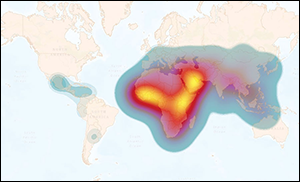
An article entitled, Global Estimate of Human Brucellosis Incidence, was published in Emerging Infectious Diseases. Although brucellosis is a major public health concern worldwide (especially for persons living in resource-limited settings), an evidence-based estimate of the global annual incidence of human cases has been elusive. This article explains how researchers were able to use international public health data to fill in this information gap through application of risk metrics for worldwide and regional at-risk populations. By making estimations using 3 statistical models (weighted average interpolation, bootstrap resampling, and Bayesian inference) and considering missing information, the team was able to estimate an evidence-based conservative incidence of 2.1 million cases of brucellosis each year, which is significantly higher than previously assumed. These models indicate that Africa and Asia sustain most of the global risk and cases for brucellosis, although areas within the Americas and Europe remain of concern. This study reveals that disease risk and incidence are higher than previously suggested and lie mainly within resource-limited settings. Clarification of both misdiagnosis and underdiagnosis is required for future studies as these factors will amplify case estimates.
September 2022
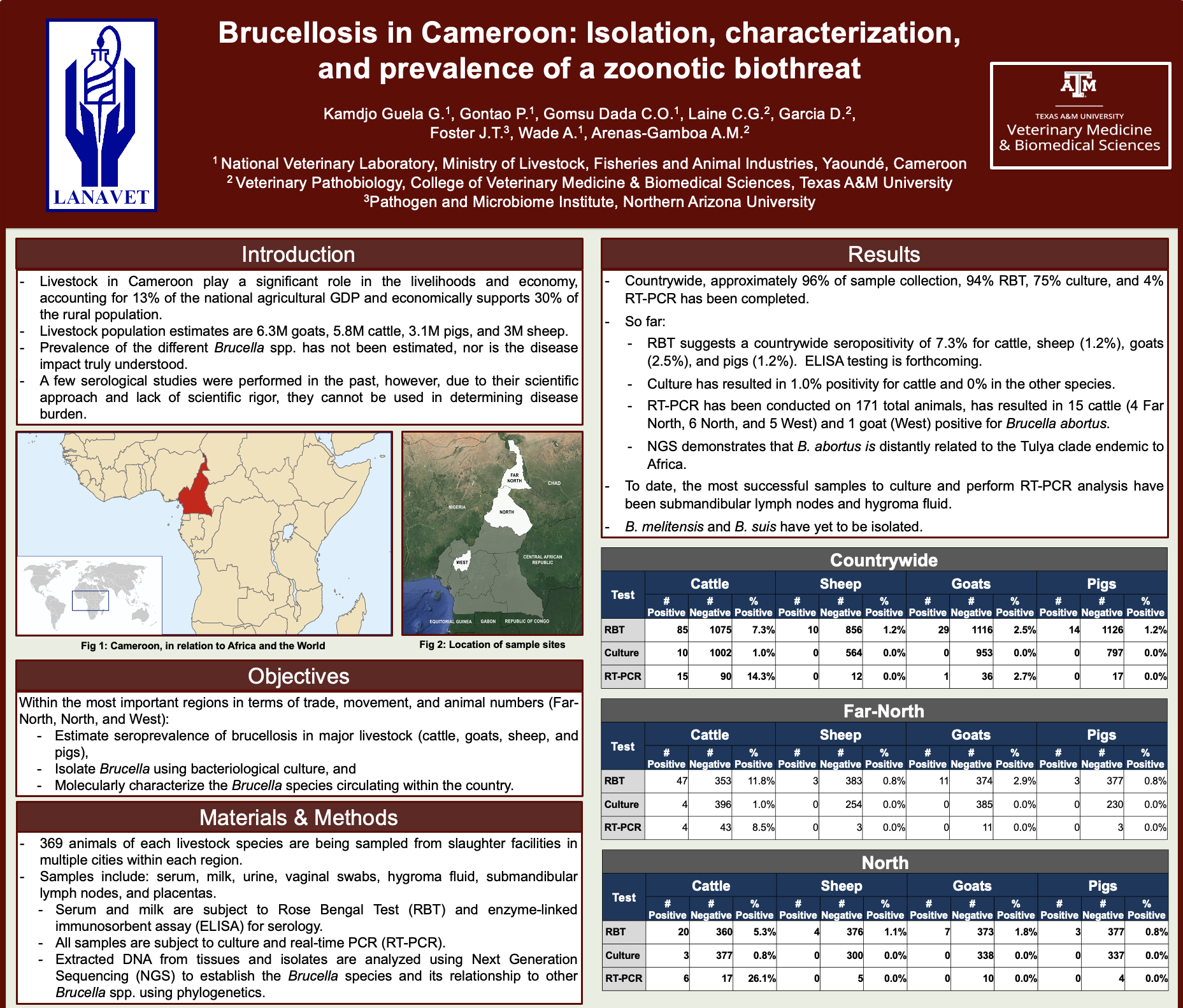 PhD students Pierre Gontao and Charles Gomsu Dada presented a poster at the 74th Annual Brucellosis Research Conference in Giulianova, Teramo, Italy entitled “Brucellosis in Cameroon: Isolation, characterization, and prevalence of a zoonotic biothreat” wherein they reported the status of an ongoing Brucella prevalence study in Cameroon. Prevalence of the different Brucella spp. in Cameroon has not been estimated, nor is the disease impact truly understood. Livestock population estimates in country are 6.3M goats, 5.8M cattle, 3.1M pigs, and 3M sheep. In this study, 369 animals of each livestock species are being sampled from slaughter facilities in multiple cities within each region. Samples collected include serum, milk, urine, vaginal swabs, hygroma fluid, submandibular lymph nodes, and placentas. Serum and milk are subject to Rose Bengal Test (RBT) and enzyme-linked immunosorbent assay (ELISA) for serology, and all samples are subject to culture and real-time PCR (RT-PCR). Extracted DNA from tissues and isolates are analyzed using Next Generation Sequencing (NGS) to establish the Brucella species and its relationship to other Brucella spp. using phylogenetics. So far, this study has demonstrated that B. abortus is endemic across the country with a high seropositivity in cattle. B. abortus positive tissues have been found positive by RT-PCR and negative by culture, possibly indicating chronic infection. It appears that comingling of cattle, goats, and sheep seems to result in cross infection of B. abortus (pigs are generally kept separately). This is the first study within Central / West Africa to conduct a comprehensive epidemiologic investigation to isolate, characterize, and provide adequate sample sizes to calculate prevalence of this disease..
PhD students Pierre Gontao and Charles Gomsu Dada presented a poster at the 74th Annual Brucellosis Research Conference in Giulianova, Teramo, Italy entitled “Brucellosis in Cameroon: Isolation, characterization, and prevalence of a zoonotic biothreat” wherein they reported the status of an ongoing Brucella prevalence study in Cameroon. Prevalence of the different Brucella spp. in Cameroon has not been estimated, nor is the disease impact truly understood. Livestock population estimates in country are 6.3M goats, 5.8M cattle, 3.1M pigs, and 3M sheep. In this study, 369 animals of each livestock species are being sampled from slaughter facilities in multiple cities within each region. Samples collected include serum, milk, urine, vaginal swabs, hygroma fluid, submandibular lymph nodes, and placentas. Serum and milk are subject to Rose Bengal Test (RBT) and enzyme-linked immunosorbent assay (ELISA) for serology, and all samples are subject to culture and real-time PCR (RT-PCR). Extracted DNA from tissues and isolates are analyzed using Next Generation Sequencing (NGS) to establish the Brucella species and its relationship to other Brucella spp. using phylogenetics. So far, this study has demonstrated that B. abortus is endemic across the country with a high seropositivity in cattle. B. abortus positive tissues have been found positive by RT-PCR and negative by culture, possibly indicating chronic infection. It appears that comingling of cattle, goats, and sheep seems to result in cross infection of B. abortus (pigs are generally kept separately). This is the first study within Central / West Africa to conduct a comprehensive epidemiologic investigation to isolate, characterize, and provide adequate sample sizes to calculate prevalence of this disease..
 Dr. Christopher Laine delivered a very popular oral presentation entitled “A new estimate of global human brucellosis incidence” at the 74th Annual Brucellosis Research Conference in Giulianova, Teramo, Italy. This study utilized a novel modelling approach of using both human and animal information to 1) identify at-risk human populations to brucellosis worldwide, 2) estimate risk for populations in which currently there is no data available, 3) estimate the risk of acquiring human brucellosis globally and regionally, 4) estimate an annual incidence, and 5) introduce misdiagnosis as a parameter to adjust these estimates. In contrast to a popular and dubious estimate of 500,000 cases per year, a new calcuation based upon scientific data and computation estimates the figure to be closer to 2.1 million cases per year (which is still a conservative estimate). Conference attendees seemed elated to have an updated estimate supported by scientific data.
Dr. Christopher Laine delivered a very popular oral presentation entitled “A new estimate of global human brucellosis incidence” at the 74th Annual Brucellosis Research Conference in Giulianova, Teramo, Italy. This study utilized a novel modelling approach of using both human and animal information to 1) identify at-risk human populations to brucellosis worldwide, 2) estimate risk for populations in which currently there is no data available, 3) estimate the risk of acquiring human brucellosis globally and regionally, 4) estimate an annual incidence, and 5) introduce misdiagnosis as a parameter to adjust these estimates. In contrast to a popular and dubious estimate of 500,000 cases per year, a new calcuation based upon scientific data and computation estimates the figure to be closer to 2.1 million cases per year (which is still a conservative estimate). Conference attendees seemed elated to have an updated estimate supported by scientific data.
August 2022
 We are excited to welcome to Dr. Sonia Vection, a postdoctoral associate from Saint-Geniès-de-Malgoirès, France into our laboratory. Dr. Vection has a PhD in Infectious Diseases and is currently focused on the development of improved diagnostic tools for animal brucellosis, more particularly B. canis which infects dogs, based on new immunodominant proteins. We are happy to have her as a part of our research team.
We are excited to welcome to Dr. Sonia Vection, a postdoctoral associate from Saint-Geniès-de-Malgoirès, France into our laboratory. Dr. Vection has a PhD in Infectious Diseases and is currently focused on the development of improved diagnostic tools for animal brucellosis, more particularly B. canis which infects dogs, based on new immunodominant proteins. We are happy to have her as a part of our research team.
May 2022
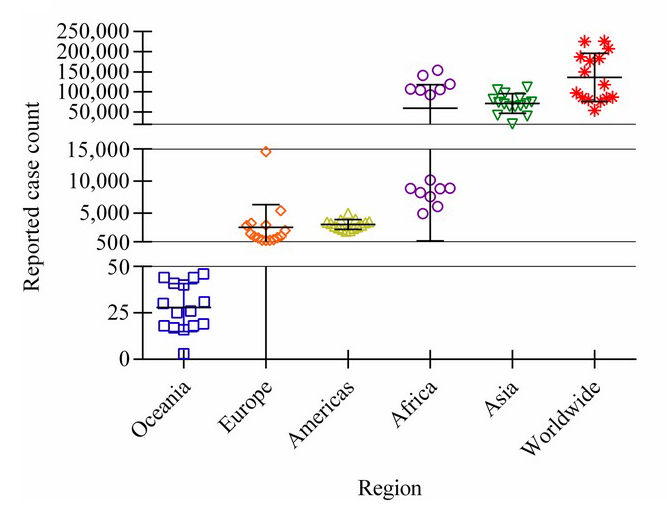
An article entitled, Human brucellosis: Widespread information deficiency hinders an understanding of global disease frequency, was published in PLOS Neglected Tropical Diseases. Despite brucellosis being a major concern worldwide, particularly for populations residing within resource-limited settings, a suitable estimate of annual incidence is currently nonexistent for human disease. To our knowledge, this is the first study to characterize global human brucellosis frequency by utilizing nationally reported case data supplied to the global intergovernmental public health authorities. The combined records demonstrate that within currently available and established international reporting systems, there are insufficient data to calculate the annual global frequency of human brucellosis. Furthermore, the regional differences in populations represented within reports, as well as actual reported case counts, bias the correct interpretation of the overall human brucellosis disease frequency. This suggests that broadcasting a specific global quantity of new cases each year is misleading and, accordingly, there is presently no way to assess the global public health impact of this disease. In past years, disease prioritization by individual countries, including the reallocation of funds to national surveillance, have been demonstrated to positively impact the completeness and representativeness of the data. In the future, the international community must similarly reallocate resources to understand and fill gaps within the available information. Application of this information can be directed towards effectively pinpointing disease burden and efficient control strategies. The reinstatement of human brucellosis as a priority Neglected Zoonotic Disease by the WHO would substantially facilitate this process.
July 2021
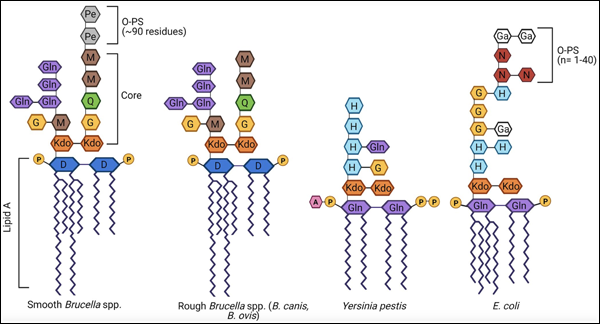
An article entitled, When the Going Gets Rough: The Significance of Brucella Lipopolysaccharide Phenotype in Host–Pathogen Interactions, was published in the Frontiers in Microbiology. Brucella is a facultatively intracellular bacterial pathogen and the cause of worldwide zoonotic infections, infamous for its ability to evade the immune system and persist chronically within host cells. Despite the frequent association with attenuation in other Gram-negative bacteria, a rough lipopolysaccharide phenotype is retained by Brucella canis and Brucella ovis, which remain fully virulent in their natural canine and ovine hosts, respectively. B. canis and B. ovis appear to have compensated for their roughness by alterations to their outer membrane, especially in regards to outer membrane proteins. B. canis, in particular, also shows evidence of being less proinflammatory in vivo, suggesting that the rough phenotype may be associated with an enhanced level of stealth that could allow these pathogens to persist for longer periods of time undetected. Nevertheless, much additional work is required to understand the correlates of immune protection against the natural rough Brucella spp., a critical step toward development of much-needed vaccines. This review will highlight the significance of rough lipopolysaccharide in the context of both natural disease and host–pathogen interactions with an emphasis on natural rough Brucella spp. and the implications for vaccine development.
January 2021
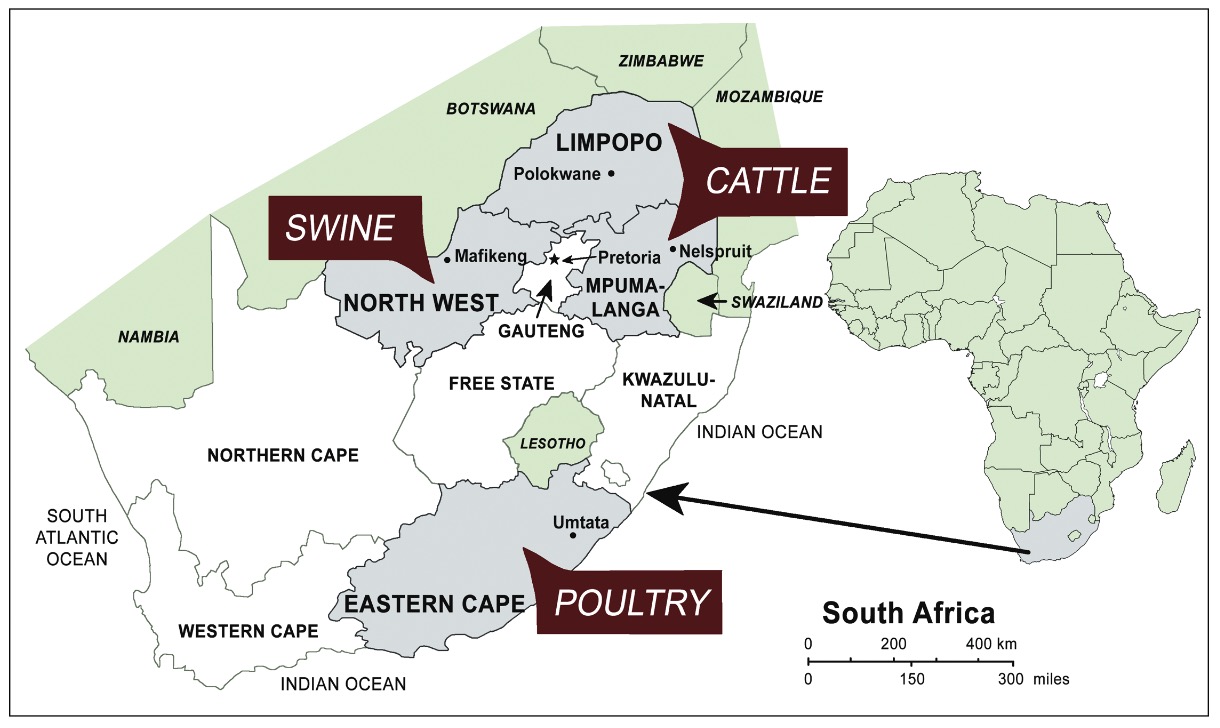
An article entitled, AgSecure Africa ProgrammeTM: A Blended Training Approach for Africa, was published in the Journal of Veterinary Medical Education. This innovative training program was developed in partnership with the South African Agricultural Research Council-Onderstepoort Veterinary Research to train veterinarians, animal health technicians, researchers and laboratory personnel. Three blended courses consisting of both virtual and in person delivery were provided with the intent of contributing to the better prevention, detection and control of infectious diseases of livestock and poultry of significant importance for the region with a strong emphasis on transboundary animal diseases. A “train the trainer” model of instruction was employed to equip participants with the ability to train and share knowledge with colleagues and small-holder farmers in their various communities and regions. The design of this program was to increase the capacity of veterinarians and veterinary diagnosticians to safely and accurately diagnose infectious livestock diseases and to also empower small-holder farmers with the knowledge needed to safely and securely manage their livestock and be a first line defense in the prevention and control of infectious livestock diseases. Course materials were submitted and approved for accreditation by the South African Veterinary Council becoming the first international training program to achieve this. Approval of these courses led to licensed veterinarians and animal health technicians being awarded continuing professional development credits upon their successful completion of courses.
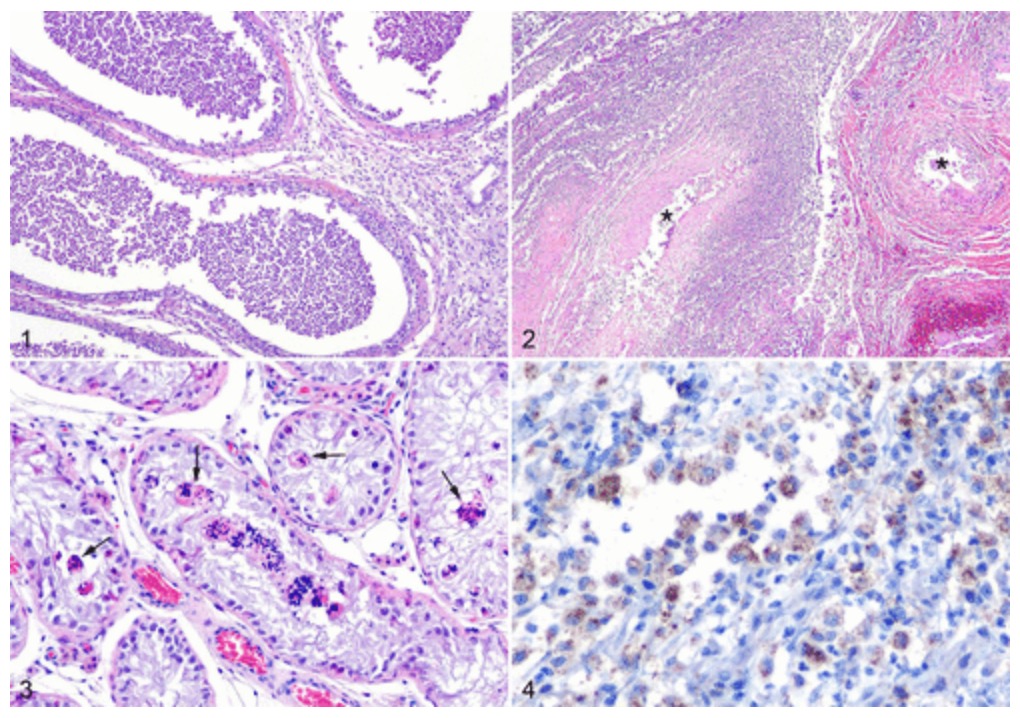
A research article entitled, Characterization of epididymal and testicular histologic lesions and use of immunohistochemistry and PCR on formalin-fixed tissues to detect Brucella canis in male dogs, was published in the Journal of Veterinary Diagnostic Investigation. In male dogs, Brucella canis frequently causes epididymitis, ultimately resulting in testicular atrophy and infertility. Although B. canis predominantly affects the epididymis, the misleading term “orchitis” is still commonly used by clinicians. Of additional concern, diagnosis in dogs remains challenging because of variable sensitivity and specificity of serologic assays and fluctuations in bacteremia levels in infected dogs, reducing the sensitivity of blood culture. In this study, we described the histologic lesions in the scrotal contents of 8 dogs suspected of being infected with B. canis and clinically diagnosed with orchitis. We explored the possibility of using immunohistochemistry (IHC) and real-time PCR (rtPCR) in formalin-fixed, paraffin-embedded (FFPE) tissues to detect the presence of B. canis. Epididymitis of variable chronicity was identified in all 8 dogs, with only 3 also exhibiting orchitis. Using rtPCR, the presence of B. canis was identified in 4 of 8 dogs, with 3 of these 4 dogs also positive by IHC. These results suggest that rtPCR and IHC are promising techniques that can be used in FFPE tissues to detect B. canis when other detection techniques are unavailable. Additionally, accurate recognition of epididymitis rather than orchitis in suspect cases could aid in accurate diagnosis.
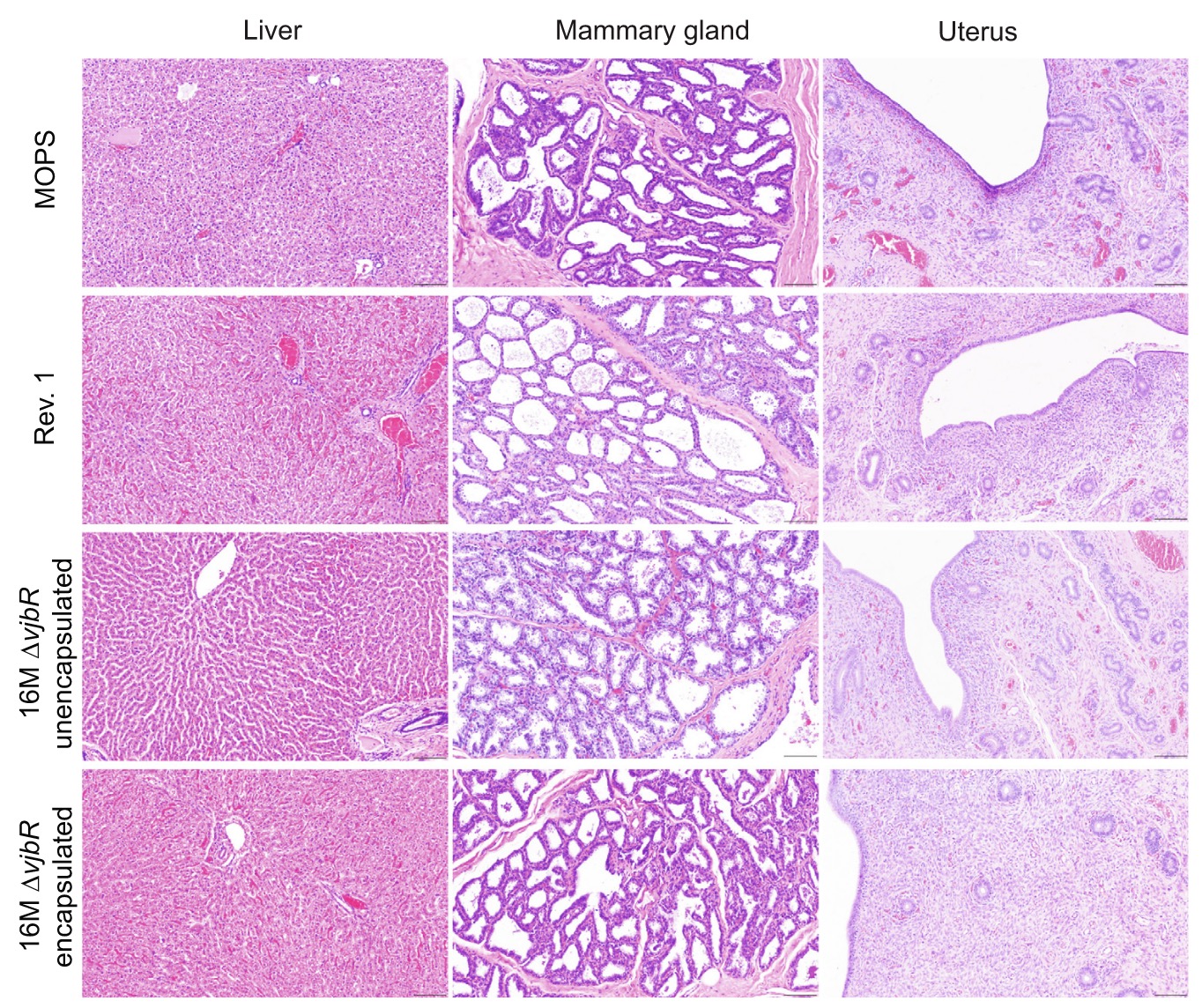
A review article entitled, Evaluation of the safety profile of the vaccine candidate Brucella melitensis 16MΔvjbR strain in goats, was published in Vaccine. Small ruminant brucellosis is caused by the Gram negative cocci-bacillus Brucella melitensis, the most virulent Brucella species for humans. In goats and sheep, middle to late-term gestation abortion, still-births and the delivery of weak infected offspring are the characteristic clinical signs of the disease. Vaccination with the currently available Rev. 1 vaccine is the best option to prevent and control the disease, although it is far from ideal. In this study, we investigate the safety of the B. melitensis 16MΔvjbR strain during a 15-month period beginning at vaccination of young goats, impregnation, delivery and lactation. None of the animals that received the vaccine candidate exhibited any clinical signs associated with vaccination nor shed the vaccine strain through saliva, vagina or the milk. Gross and histopathologic changes in all nannies and offspring were unremarkable with no evidence of tissue colonization or vertical transmission to fetuses. Altogether, these data demonstrated that vaccination with the mutant strain 16MΔvjbR is safe for use in the non-pregnant primary host. Previous to this investigation, the B. melitensis 16MΔvjbR strain had been studied only in terms of safety and efficacy in the mouse model. In this study, for the first time, the safety and immunogenicity developed by the vaccine strain candidate was demonstrated in the natural host for over a 15 month period.
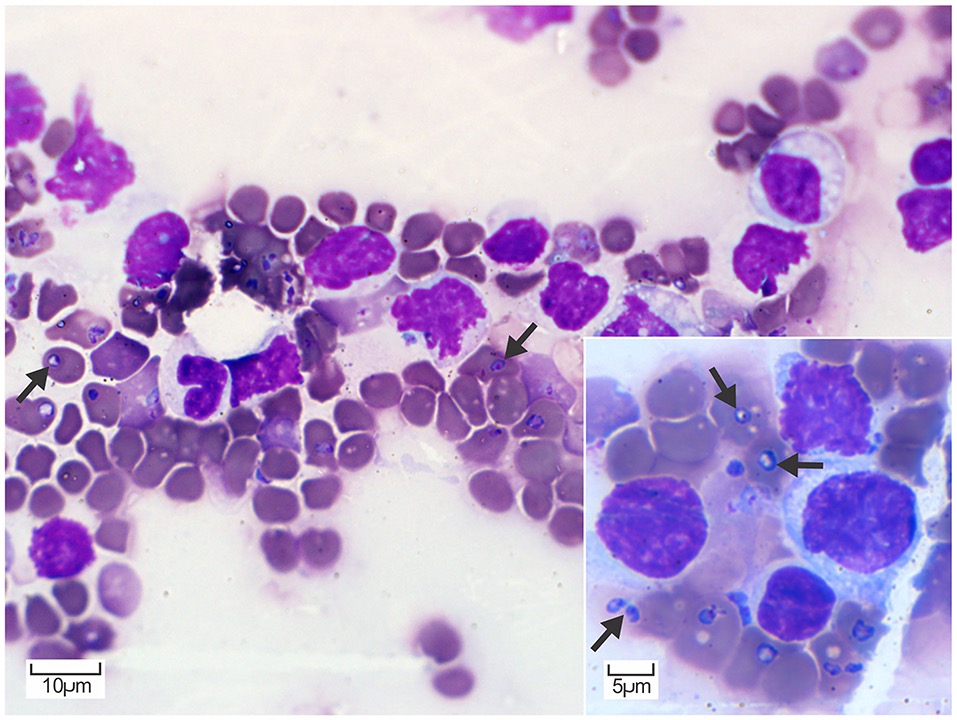
An article entitled, Porcine babesiosis caused by Babesia sp. Suis in a pot-bellied pig in South Africa, was published in the Journal of Veterinary Diagnostic Investigation. Babesiosis is a worldwide, tick-borne disease of economic importance in livestock caused by Babesia spp., which are hemoparasitic piroplasms that target host erythrocytes. Cattle, dogs, small ruminants, and wild ruminants are the species most commonly affected, while the diseases is less frequently reported in cats, horses, and pigs. In this article, the authors described a case in a 12-year old pot-bellied pig from South Africa that died after a history of anorexia and reluctance to rise for 2 days. A complete necropsy, blood smear cytology, reverse line blot (RLB) hybridization and 18S rRNA sequencing were performed. Numerous Babesia spp. hemoparasites and a moderate regenerative anemia were identified on blood smear, and the rRNA sequencing revealed a 100% identity to the published sequence of Babesia sp. Suis isolated from pigs in Italy. This case of babesiosis emphasizes the increasing importance of public awareness in regions where porcine babesiosis has been historically rare, such as in southern Africa. Multiple environmental and evolutionary pressures on tick vectors and related causative agents are anticipated to cause widened the spread of tickborne diseases in the future. As a result, babesiosis should be considered a possible differential diagnosis for pigs that present with lethargy, anemia, icterus, and hemoglobinuria.
September 2020

A review article entitled, Scoping Review of Brucellosis in Cameroon: Where do we stand, and where are we going?, was published in PLoS One. This scoping review describes the current known status of brucellosis in Cameroon. Brucellosis is a zoonotic disease known to be endemic to parts of western and sub-Saharan Africa. However, the epidemiology for humans and animals remains largely unknown in many of these countries with Cameroon being a typical example. Despite common knowledge that brucellosis affects livestock, the actual number of infected animals remains unknown. The aim of this study was to ascertain relevant and publicly accessible research and knowledge of both human and animal brucellosis in the country, and provide an overview of the factors associated with its known persistence. This review found that seroprevalence from 196 total humans in Cameroon has ranged between 5.6% and 28.1%, and between 3.0% and 30.8% for 14,044 total cattle. As there is no ongoing surveillance program for this disease, it is not currently possible to identify the specific Brucella spp. that are endemic to the country and its regions, although Cameroon has sufficient agricultural systems of cattle, pigs, goats, and sheep to sustain the presence of multiple Brucella spp. As surveillance information is the cornerstone of epidemiologic decision making, and is needed to direct policy makers, public health authorities, and veterinary services to appropriate actions, a combination of serological and molecular based diagnostics for surveillance is necessary to identify, quantify, and direct the appropriate public health interventions.
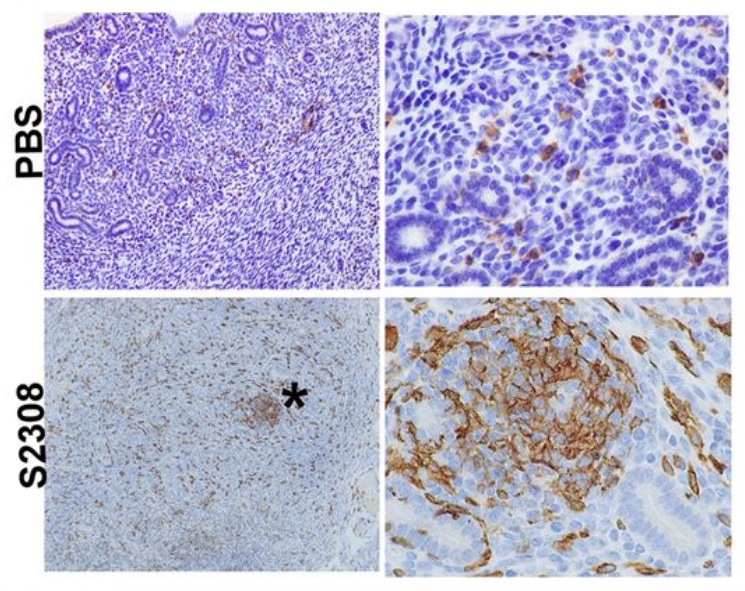
A research article entitled, Brucella abortus and pregnancy in mice: impact of chronic infection on fertility and the role of regulatory T cells in tissue colonization, was published in the journal Infection and Immunity. Stealthy intracellular bacterial pathogens are known to establish persistent and sometimes lifelong infections. Some of these pathogens also have a tropism for the reproductive system, thereby increasing the risk of reproductive disease and infertility although to date, the pathogenic mechanism involved remains poorly understood. This study demonstrated that Brucella abortus, a notorious reproductive pathogen, had the ability to infect the nonpregnant uterus, sustain infection, and induce inflammatory changes during both acute and chronic stages of infection. It was also demonstrated that chronically infected mice had a significantly reduced number of pregnancies compared to naive controls. In order to investigate the immunologic mechanism responsible for uterine tropism, this study explored the role of regulatory T cells (Tregs) in the pathogenesis of Brucella abortus infection. It was demonstrated that highly suppressive CD4+FOXP3+TNFR2+ Tregs contribute to the persistence of Brucella abortus infection and that inactivation of Tregs with tumor necrosis factor receptor II (TNFR2) antagonistic antibody protected mice by significantly reducing bacterial burden both systemically and within reproductive tissues. These findings support a critical role of Tregs in the pathogenesis of persistence induced by intracellular bacterial pathogens, including B. abortus. Results from this study indicate that adverse reproductive outcomes can occur as sequelae of chronic infection in nonpregnant animals and will help to establish immunotherapeutic strategies and approaches to control intracellular bacterial infections with known predilection for the uterus, including brucellosis.
August 2020
Charles Gomsu Dada, Gaelle Guela, and Pierre Gontao completed their TAMU training program in the area of brucellosis diagnostics, biosafety and biosecurity procedures, and epidemiological principles. During their time in Dr. Arenas’ laboratory, they completed training in 1) standard operating procedures (SOPs) for brucellosis research, 2) necropsy and tissue sample collection, 3) media preparation for Brucella culture and isolation, 4) Brucella culture, characterization, and CFU counting, 5) inactivation of live Brucella, 6) use of Point-of-Care portable PCR diagnostic tool, 7) DNA extraction for PCR, 8) principles of serodiagnostic techniques (FTA cards, performing Rose Bengal Tests), 9) performing iELISA, and 10) histology/immunohistochemistry techniques.
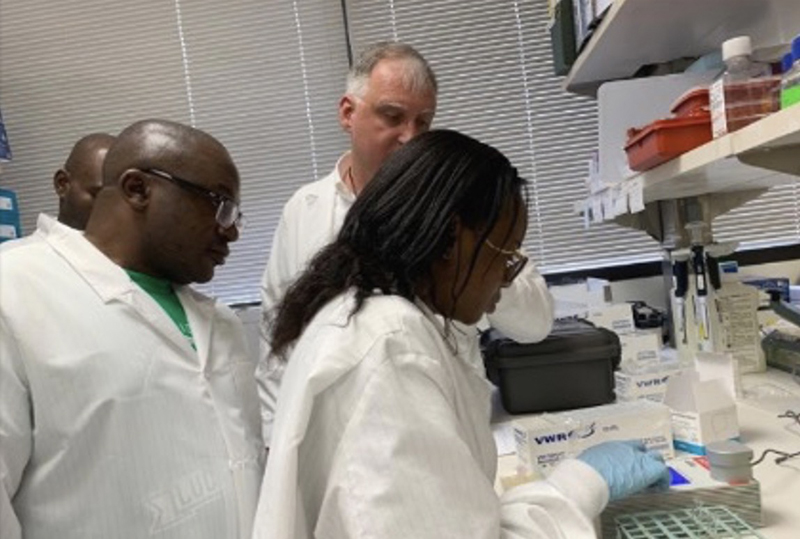
Students also received epidemiological training from Dr. Christopher Laine in 1) key features and applications of descriptive and analytic epidemiology, 2) sampling techniques, 3) questionnaire design, 4) summarization of data (calculation and interpretation of mean, median, mode, ranges, variance, standard deviation, and confidence intervals), 5) measures of risk and disease frequency, 6) displaying public health data, 7) screening and diagnostic tests, 8) public health surveillance, and 9) investigating outbreaks.
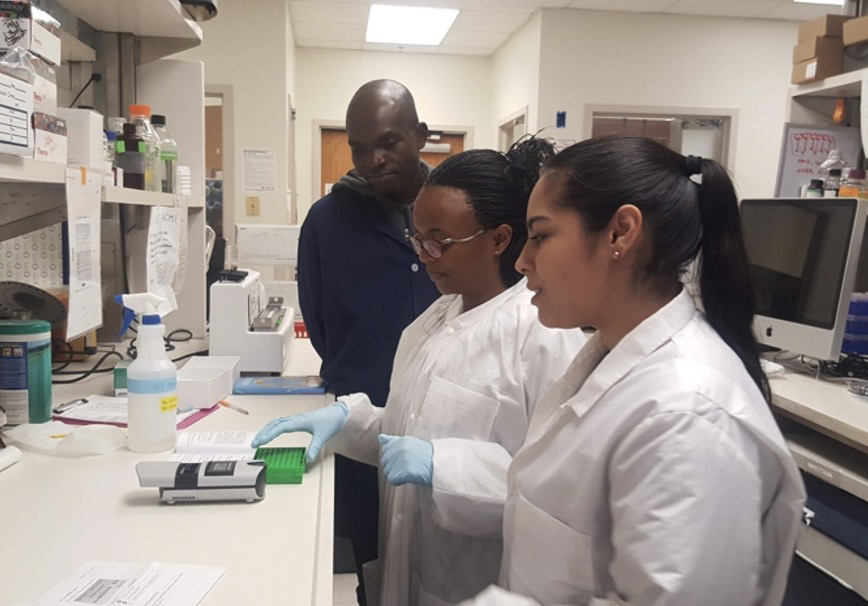
Upon their return to Cameroon, they will begin the collection of tissue samples for the project, and will be able to train laboratory personnel at LANAVET in molecular and serologic methods of brucellosis diagnostics and deeply engrain the laboratory with a culture of high-level diagnostic capacity which will endure beyond the end of the research project.
July 2020
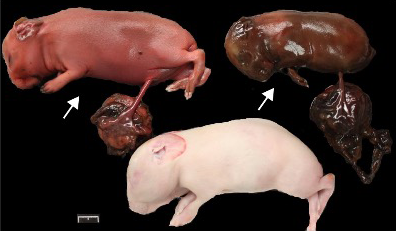
A research article entitled, Intratracheal inoculation with Brucella melitensis in the pregnant guinea pig is an improved model for reproductive pathogenesis and vaccine studies, was published in the journal Infection and Immunity. Reproductive failure is the hallmark of brucellosis in animals. An uncommon but important complication in pregnant women who become acutely infected with Brucella melitensis is spontaneous pregnancy loss or vertical transmission to the fetus. Unfortunately, the mechanism behind reproductive failure is still obscure, partially due to the lack of a proper study model. This study indicates that pregnant guinea pigs are an appropriate animal model to study reproductive disease and offers an improved model to evaluate the ability of vaccine candidates to protect against serious manifestations of the disease.
May 2020
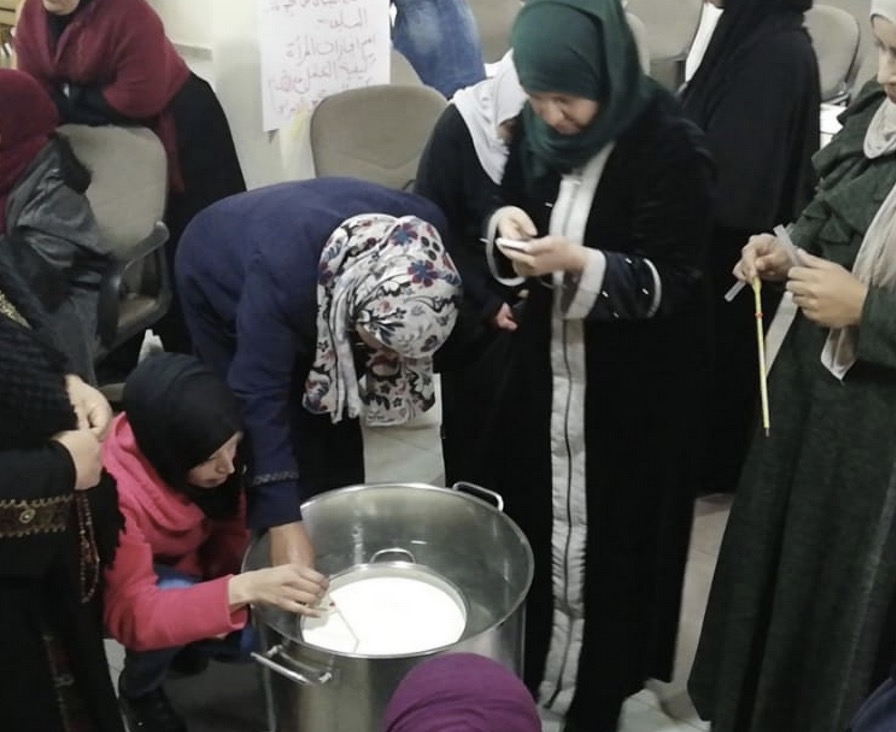
A review article entitled, Brucellosis in the Middle East: Current Situation and a Pathway Forward, was published in the journal PLoS Neglected Tropical Diseases. Brucellosis is a bacterial endemic zoonotic disease of global significance with detrimental impacts on public health and food animal production. Bovines and small ruminants, which excrete the bacteria in milk and in reproductive discharges, are major sources of infection for humans and other animals. Contact with contaminated animals and consumption of unpasteurized dairy products are the main routes for human infection. In spite of the considerable progress of knowledge gained and success achieved in brucellosis control in the developed world, this disease continues to be an important burden in the Middle East. In this article, a regional approach toward public awareness of brucellosis is proposed as the first step in mitigating the disease, and the potential benefits and components of such a strategy are discussed.
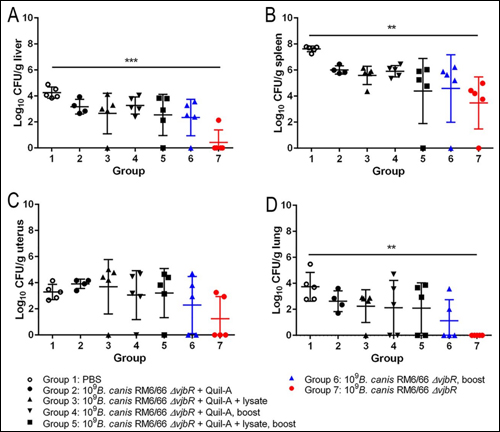
A research article entitled, Evaluation of the Efficacy of the Brucella canis RM6/66 ΔvjbR Vaccine Candidate for Protection against B. canis Infection in Mice, was published in the journal mSphere. Brucella canis is a highly contagious disease of dogs that can be transmitted to humans. Unfortunately, no vaccine is available to prevent infection in dogs. In this study, the use of a mouse model was evaluated in assessing the canine brucellosis vaccine candidate RM6/66 ΔvjbR strain. The study reveals that the B. canis RM6/66 ΔvjbR vaccine candidate shows promise as a vaccine for canine brucellosis and validates the mouse model for future vaccine efficacy studies.
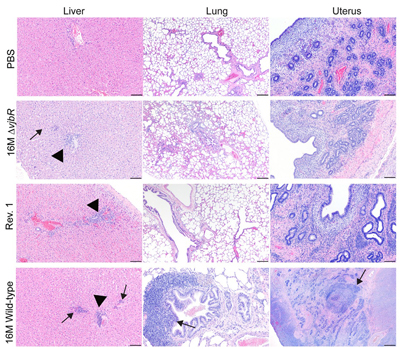
A research article entitled, Vaccine Candidate Brucella melitensis 16MΔvjbR Is Safe in a Pregnant Sheep Model and Confers Protection, was published in the journal mSphere. As the title suggests, this study revealed evidence that the vaccine candidate Brucella melitensis 16MΔvjbR confers protection and is a safe vaccine that can be used in pregnant sheep as compared to the approved B. melitensis Rev. 1 vaccine which causes abortions when given to pregnant animals. Overall, the 16MΔvjbR vaccine candidate assessed in this study was considered safer than Rev. 1 based on a reduced number of abortions and limited infection in the offspring. Future experiments are needed to further refine the vaccine dose to increase the safety margin and to evaluate protection in pregnant ewes.
April 2020
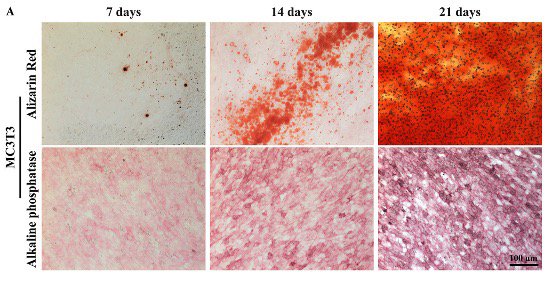
A research article was published in the journal Infection and Immunity entitled, Interaction of Brucella abortus with Osteoclasts: a Step toward Understanding Osteoarticular Brucellosis and Vaccine Safety. Osteoarticular disease is a frequent complication of human brucellosis, but there are currently no vaccines for use in humans, and no in vitro models exist for assessing the safety of candidate vaccines in reference to the development of bone lesions. This research study on Brucella infection of osteoclasts suggest that osteoclasts play an important role in osteoarticular brucellosis and could serve as a useful in vitro model for both analyzing host-pathogen interactions and assessing vaccine safety.
March 2020
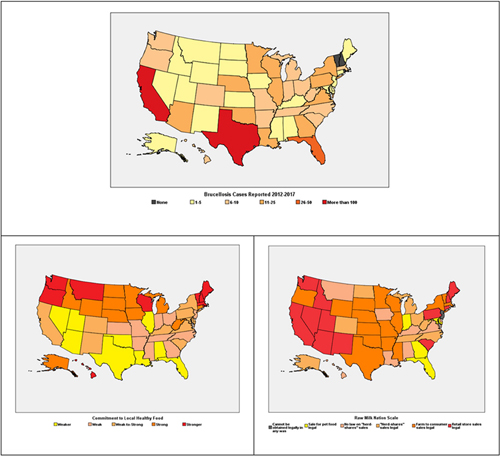
A review article entitled, Building the Evidence Base for the Prevention of Raw Milk-Acquired Brucellosis: A Systematic Review, was published in Frontiers in Public Health. This study focused on human brucellosis, one of the infectious diseases commonly acquired through the consumption of raw milk and milk products, and which continues to be a public health threat worldwide. This review identified several gaps and factors that possibly contribute to the increased prevalence of raw milk-acquired brucellosis including inadequate monitoring of the raw milk sales process and lack of approved diagnostic methods for validating the safety of raw milk for human consumption.
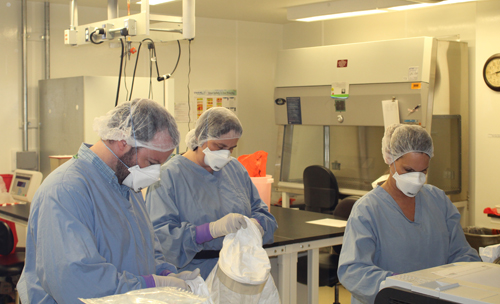
An article entitled, Bench to Shop™: An Interdisciplinary Training Program for Transitioning of Transboundary Animal Disease Research to Commercialization, was published in the Journal of Veterinary Medical Education. This article details a program designed to enable next-generation researchers to gain an understanding of the business regulations, federal and international processes, and research requirements needed to take Transboundary Animal Disease (TAD) research through technology transition to commercialization. Through an interdisciplinary and blended training participants expanded their professional networks with leaders in industry and regulatory agencies related to production and/or commercialization of TAD products and deepened their commitment toward keeping our country safe from TADs. Post-program impacts on trainees included advancing products toward commercialization, partnering with connections made through the program, and demonstrating dedication to homeland security by pursuing product development related educational and career opportunities. Overall, results suggest this program provides an added value and should be readily available to the current and future workforce.
February 2020
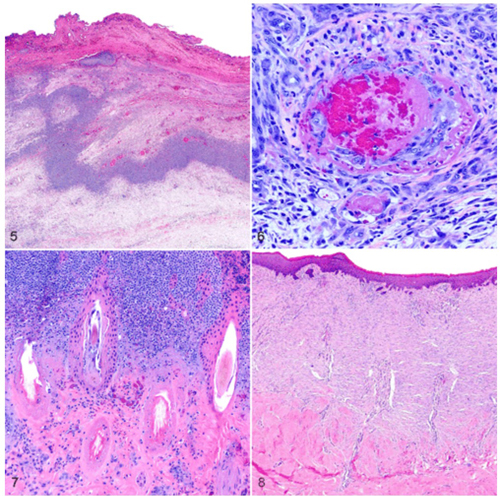
Dr. Angela Arenas co-authored an article entitled, Immersion Foot Syndrome in 6 Equids Exposed to Hurricane Floodwaters published in the journal of Veterinary Pathology concerning a case study of equids which experienced a prolonged exposure to water. In humans this condition is known as immersion foot syndrome, a phenomenon first described in soldiers during World War I and characterized by dermal ischemic necrosis. In this report, the authors describe the pathologic findings of a condition resembling immersion foot syndrome in 5 horses and 1 donkey with prolonged floodwater exposure during Hurricane Harvey.
December 2019
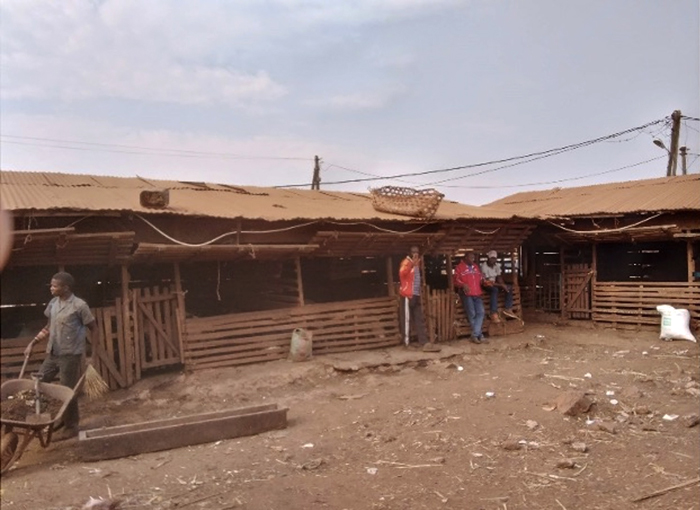
Drs. Angela Arenas, Abel Wade, and Christopher Laine traveled to Bafoussam, Cameroon to make observations of livestock practices in the country and assess the human capacity (e.g., administrators, regional delegates, veterinarians, livestock brokers) and physical capacity (e.g., slaughterhouses, slaughter points, abattoirs) to successfully conduct a DTRA funded brucellosis research project.
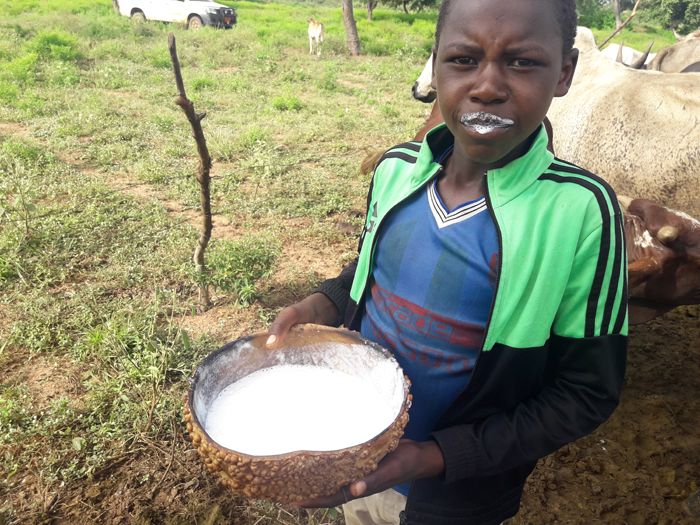
In the course of the visit, the team learned the level of knowledge of brucellosis among all stakeholders, the suitability and conditions of abattoirs and slaughterhouses where samples for the study will be collected, and learned of the sources and movements of livestock within Cameroon. The team also gained an appreciation of pastoral ranch management upon government owned land where animals comingle during grazing, and the general lack of pasteurizing milk prior to consumption by the populace was confirmed.

Through this visit, appropriate contacts have been made and the needed groundwork laid for the successful start of tissue sample collection in Bafoussam for this research project. A better understanding of conditions on the ground in Cameroon will provide our trainings of stakeholders in the country to include key aspects of biosecurity tailored to the region and the establishment of important protocols to improve food safety.
November 2019
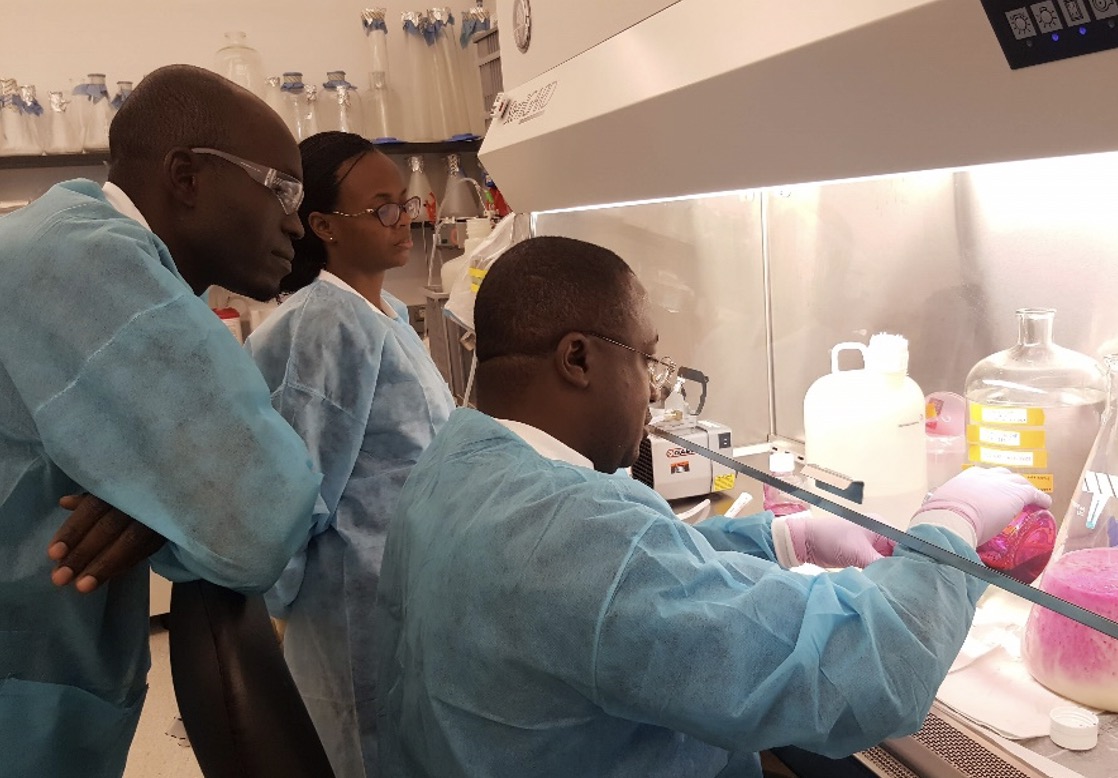
Charles Gomsu Dada, Gaelle Guela, and Pierre Gontao travelled to the National Veterinary Services Laboratories in Ames, Iowa where they engaged in a 1-week training course in the production of Rose Bengal reagent used in the rapid slide agglutination test for Brucella detection, and also received training in validation (quality control) and proficiency testing (quality assurance) procedures. During the training, the students successfully produced Rose Bengal reagent and were instructed in general validation and proficiency testing procedure. In applying these principles, students took their newly produced Rose Bengal reagent through the validation process, and were tested in their proficiency in conducting the Rose Bengal Test. Students’ proficiency in making their own Rose Bengal reagent for serologic testing for brucellosis will increase diagnostic capacity in Cameroon which should prove beneficial for that entire region of Africa.
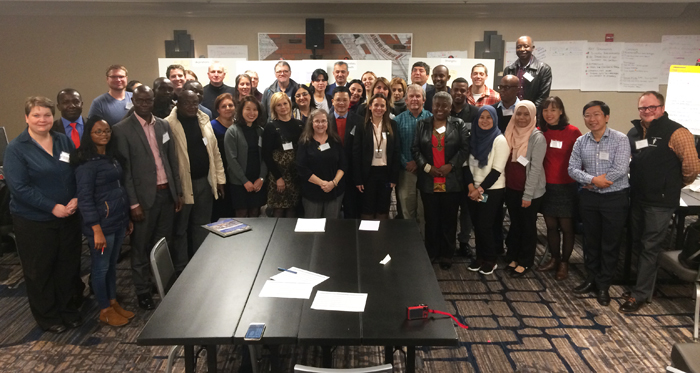
As chair of the International Brucellosis Society, Dr. Angela Arenas sought funding for and delivered a “101 Workshop on Fundamental Brucellosis” to 28 participants from 10 different countries as a concurrent session at the Annual Brucellosis Meeting in Chicago in November 2019. Instruction was delivered by the best subject matter experts in the field, highlighting the commitment of the brucellosis society to promote and disseminate accurate and reliable information about brucellosis. A complete description of the program and outcomes is outlined here.
October 2019
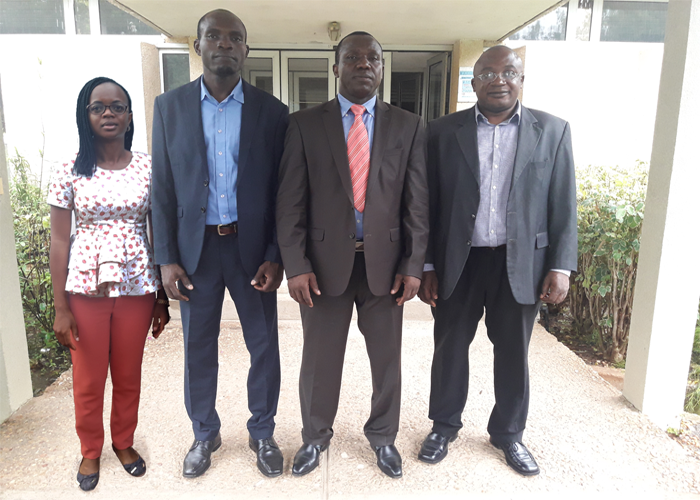
Three PhD students (Charles Olivier Gomsu Dada, DVM; Gaelle Kamdjo Guela, MS; Pierre Gontao, MS) from 3 universities in Cameroon (University of Dschang, University of Yaoundé, and University of Ngaoundere, respectively) were recruited and selected for our Brucellosis Research project in Cameroon through interaction with Dr. Abel Wade, Director of the LANAVET Annex in Yaoundé. These students will spend 5 months of training in Dr. Arenas-Gamboa’s laboratory learning molecular and serological techniques of Brucellosis detection for their work in the project and to increase human capacity of brucellosis detection in Cameroon.
September 2019
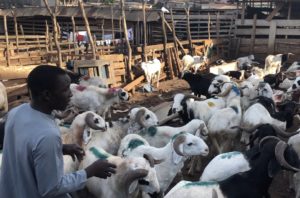
Dr. Angela Arenas was awarded funding from the United States Department of Defense (Defense Threat Reduction Agency) to lead a research project in Cameroon to assess the prevalence of brucellosis in the country as a first step in laying the groundwork for a vaccination campaign against this disease. The team will will evaluate the prevalence of brucellosis in the country and will work to cultivate the Cameroonian government’s capacity to better prevent, detect, and respond to brucellosis. The complete VMBS press release may be read here.
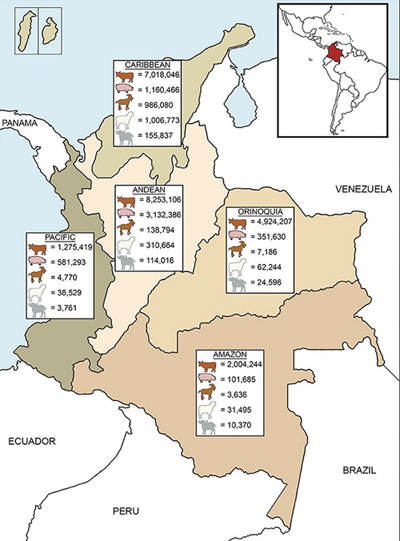
A review article entitled, Brucellosis in Colombia: Current Status and Challenges in the Control of an Endemic Disease was published in Frontiers in Veterinary Science. This scoping review provides an overview of the brucellosis status in Colombia and the factors associated with its persistence, highlighting the strengths and gaps of adopted countermeasures, and also supplies evidence to policy-makers on the best approaches to mitigate the disease burden of brucellosis in Colombia.
August 2019
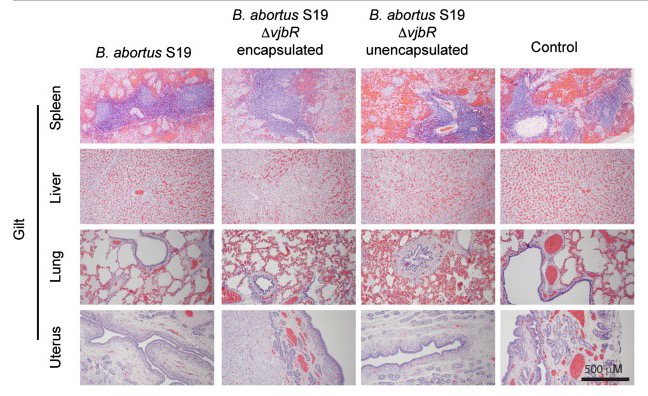
Finally, after huge efforts working with pigs in BSL2 facilities, analysis of tremendous amounts of samples, and discovery of compelling findings, the study “Vaccine Safety Studies of Brucella abortus S19 and S19ΔvjbR in Pregnant Swine” was accepted for publication in the journal Vaccine X as part our journey towards improving live attenuated vaccines for brucellosis.
This study highlighted the following key points:
1) Vaccination with Brucella abortus S19 or S19ΔvjbR in pregnant swine did not induce abortion, stillbirths or cause a reduction in litter size.
2) Gross and histopathological evaluation did not demonstrate any local or systemic side effects associated with either vaccine.
3) At the time of delivery, there was no evidence of the presence of either vaccine strains in fetuses, placentas or sows.
4) Both vaccine candidates are safe for use in pregnant swine.
Special congratulations go to Slim Zriba, Daniel G Garcia, Omar Khalaf and Lance Wheeler for their efforts in field and laboratory work, and all other co-authors that contributed toward the design of the study and the writing of the manuscript including our PI, Dr. Arenas, for leading this project. Thanks to the National Institute of Food and Agriculture –USDA for funding the project and the Graduate student support (SZ) from the Fulbright Foreign Student Program for the Middle East & North Africa (AMIDEAST) – US Department of State. The complete article may be read here.
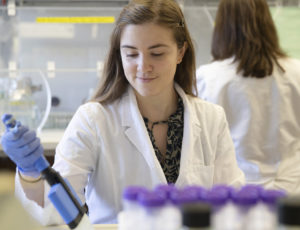
Congratulations to our student Lauren Stranahan for receiving a “T-32 Fellowship” from the National Institutes of Health for the period of 2019-2023. These awards are made to support pre- and/or postdoctoral fellows training in basic, clinical, and behavioral research to ensures that a diverse and highly trained workforce is available to assume leadership roles in biomedical, behavioral, and clinical research. This is terrific! Well done Lauren!
July 2019

A warm welcome to Andrea Camargo, a veterinarian student from the Universidad de Ciencias Agropecuarias y Aplicadas UDCA, located in Bogota, Colombia. Andrea will stay with us 5 months as a Visiting Scholar to enhance her research capacities and share interesting experiences working with subunit vaccines at the Immunology Institute of Colombia FIDIC, led by Dr. Manuel Elkin Patarroyo.
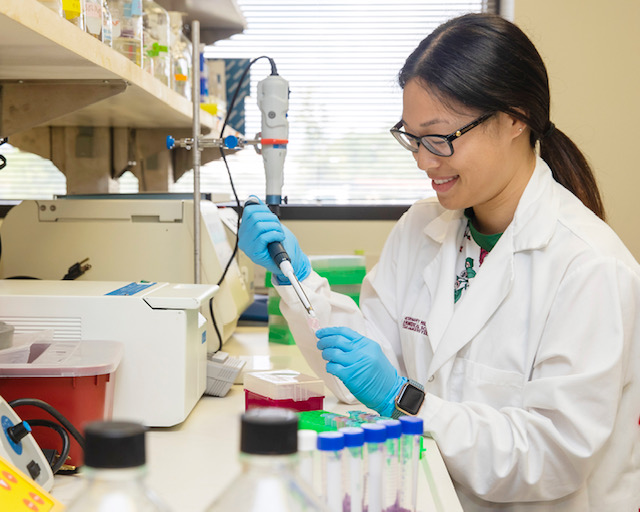
It was a pleasure to have Janice Park, third-year veterinarian student at TAMU, participating in research in our lab during the summer under the Veterinary Medicine Summer Research Training Program. Janice participated specifically on cloning and purifying immunodominant Brucella canis proteins as part of our project towards the evaluation of a new vaccine for canine brucellosis and the development of improved diagnostic tests capable of differentiating naturally infected vs. vaccinated animals. Despite the short time, Janice was able to give an oral presentation of the results at a research symposium at TAMU and present a poster in a conference organized by Worcester State University in Massachusetts. Well done Janice! We wish you all the best on continuing your career, and we hope to see you and to collaborate with you again in the future.
June 2019
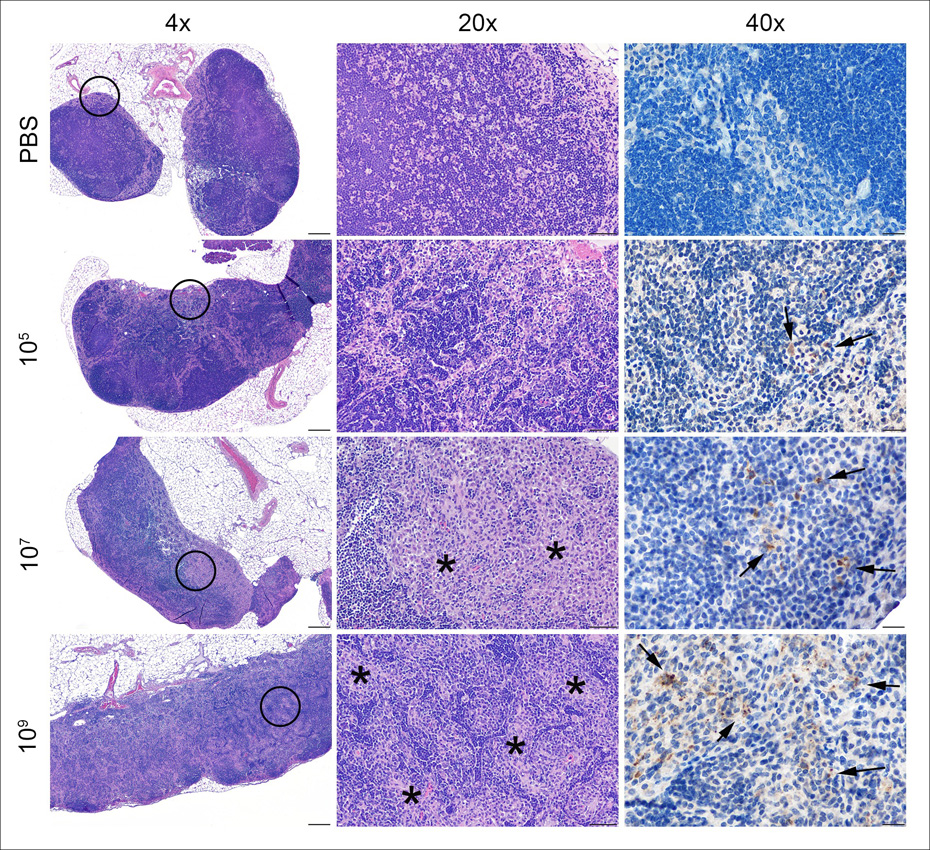
Our research article on the “Characterization of Brucella canis infection in mice” was accepted for publication in PLOS one! “Felicitaciones” Lauren Stranahan for this awesome achievement and all the coauthors that contributed to the study. This research extends the knowledge of B. canis infection in mice and identifies multiple similarities to infections with smooth Brucella sp and to natural infections in dogs, and could serve as a useful model to investigate host-pathogen interactions and vaccine candidates as it does for smooth Brucella species. Please click here to access to the full article online.
April 2019
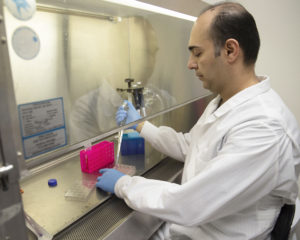
Great news! We have another research achievement demonstrating the great effort and progress of the neglected zoonotic diseases group led by Dr. Angela Arenas! Our research in NOD-scid IL2rγnull as a suitable mouse model to study osteoarticular brucellosis and vaccine safety was accepted and published by the journal Infection and Immunity! Special congratulations to our student, Dr. Omar Khalaf, as the first author of this outstanding research. Please click here to read this publication.
March 2019

After working hard with guinea pigs inside high containment with promising results, Dr. Martha Hensel and coauthors got the research article: “Characterization of an intratracheal aerosol challenge model of Brucella melitensis in guinea pigs” published in PLOS ONE!! Congratulations again, Martha and all coauthors for this outstanding research which has previously received awards in several conferences and seminars! Please click here to access this publication.
January 2019
A warm recognition goes to our PI, Dr. Angela Arenas, and our student, Dr. Shakirat Adetunji, for their interesting systematic review and meta-analysis of the prevalence of osteoarticular brucellosis, which was recently published in the PLOS neglected tropical diseases journal. This is great news. Thanks for highlight the importance and challenges of this important problem. Please access this article online.
December 2018
Once again, our students did a wonderful job presenting our research projects at the International Brucellosis Society Meeting in Chicago (Dec 1-2, 2018). Following are the titles of the students’ oral presentations:
- Characterization of Brucella canis infection in mice (presented by Dr. Lauren Stranahan)
- Development of a pregnant guinea pig model for human reproductive brucellosis (presented by Dr. Martha Hensel).
- The role of regulatory T cells in Brucella-induced fetal resorption (presented by Dr. Shakirat Adetunji).
- Mature osteoclast support replication and survival of Brucella abortus (presented by Dr. Omar Khalaf)
Special congratulations go to Lauren Stranahan and Martha Hensel for finishing first place on best oral presentations. Good job guys!
October 2018
Published article
Again, bravo!! Congratulations to Dr. Angela Arenas and Dr. Martha Hensel for your published review article, “ A neglected animal model for a neglected disease: guinea pigs and the search for an improved animal model for human brucellosis,” which was published by Frontiers in Microbiology and can be seen or downloaded here.
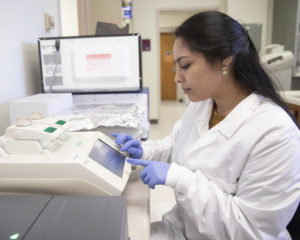
Visiting research scholar from Colombia
We welcome back Lisa Maria Avila to our laboratory as a visiting Research Scholar, following her graduation as a veterinarian in Colombia. During her stay, she will be participating in developing innovating techniques and tools for the detection of Brucella. Lisa will continue enhancing her skills and research capabilities as well as sharing experiences based on her studies, research, and challenges in her country, which is creating interesting international collaborative research networks for the future.
September 2018

Warm congratulations to our Ph.D. student, Shakirat Adetunji, for obtaining the people’s choice award presenting research on “The role of regulatory T cells in Brucella-induced fetal resorption” during the 3rd Annual Postdoctoral Research Symposium as a “Distinguished Postdoctoral Poster Presentation” at Texas A&M University.
August 2018
Congratulations go to Dr. Arenas and our student, Dr. Martha Hensel, for their published article in partnership with the CDC (Dr. Maria Negron): “Brucellosis in dogs and public health risk” which was published in Emerging Infectious Diseases, and most amazingly, was selected for a monthly press release!! Well done! Please access this article online.
July 2018

Welcome to Ramin Bagheri Nejad, a Ph.D. student from the University of Tehran (Iran). Ramin will continue with us as a visiting research scholar for 2 months. Dr. Ramin has more than 10 years of experience with brucellosis vaccine development in his country, and we are pleased to share experiences with him and establish international collaborative research networks.
May 2018
A multidisciplinary seed-grant program administered by the vice president for research at Texas A&M titled “T3 Texas A&M Triads for Transformation” which supports great ideas from a mere vision to a proof of concept, selected to fund our project: “New Trends bring new challenges: Consumption of raw milk and the reemergence of brucellosis in the US”. This is an amazing opportunity to develop a comprehensive evidence-based framework to help stop brucellosis spread by 1) developing a diagnostic test for brucellosis in raw milk products, 2) creating an effective plan to increase cultural awareness of the negative effects associated with consumption of raw milk products, and 3) assist policymakers in making evidence-based decisions to assure implementation of a good quality control program for raw milk.
January 2018
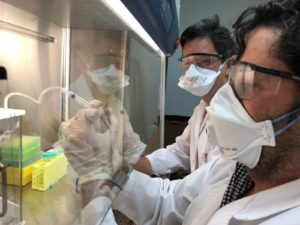
Grant Awarded
The Board of Directors of the American Kennel Club Canine Health Foundation, Inc. (CHF) approved us an awarded the grant: “Evaluation of a new vaccine for canine brucellosis”!! This is amazingly good news that will support us to continue working on this valuable process! Thanks to all who participated to get this done, especially Sankar and Daniel!

Published article
Well done to our student Katherine Franc who did an internship with our lab during the summer of 2017 as well as to our PI, Dr. Arenas, and to Drs. Krecek and Häsler for the impressive article: “Brucellosis remains a neglected disease in the developing world: a call for interdisciplinary action”, which was published in the BMC Public Health journal. If you would like to find out why brucellosis is still a neglected disease in the developing world and the consequences of it, access the article here.
December 2017
Participation in the Brucellosis Society Meeting
Our students did a great job sharing their projects and experiences at the International Brucellosis Society Meeting in Chicago, IL, USA (Dec 1-3, 2017), which is a satellite of the Conference of Research Workers in Animal Diseases – CRWAD. The research shared by our students is listed below:
1) Intratracheal inoculation of the guinea pig as an improved aerosol model for Brucella melitensis infection (Martha Hensel, oral presentation)
2) Towards the development of a live attenuated vaccine for canine brucellosis (Lauren Stranahan, poster)
3) NOD-scid IL2rγnull mouse as a model to study Brucella-induced osteoarticular disease (Omar Khalaf, poster)
Manuscript published (feral swine brucellosis)
An important research article was published this month in the Zooneses Public Health Journal based on our work in the detection of Brucella spp in feral swine, in partnership with USDA and APHIS. In this study, Brucella spp were cultured from 13% of the feral swine samples taken at two federally inspected abattoirs. These results demonstrate the potential risk of these animals spreading the disease, which was underestimated by the conventional serology tests. The manuscript, titled “Identification of Brucella spp. in feral swine (Sus scrofa) at abattoirs in Texas, USA,” can be seen here.
November 2017
Congratulations to our student, Lauren Stranahan, for winning first place in the “Young Investigator Award in Diagnostic Pathology” category for her poster, “Rhodococcus equi Infection in Goats: Characterization of Virulence Plasmids,” which was presented at the American College of Veterinary Pathologists Annual Meeting held in Vancouver, B.C., Canada on November 4-8, 2017
October 2017

Reciprocal Visit Uganda
We spent more than one week in Uganda, East Africa to complete the reciprocal visit under the Fellowship Program: Brucellosis Strategies and Coping Methods with our fellow, Dr. Peter Oba (from Uganda). During the visit, we helped Dr. Oba improve his skills and make adjustments based on the local settings and identified key gaps in the area of research, veterinary diagnostics, and vaccine production that could be strengthened through mutual collaborations.
In regards to building collaboration, we met with representatives of National Agricultural Research Organization (NARO), the Commissioner of Veterinary Regulation and Enforcement Department of Animal Health, National Animal Diseases Diagnostics & Epidemiology Centre (NADDEC), Makerere University- College of Veterinary Medicine, Animal Resources & Biosecurity (COVAB), and the International Livestock Research Institute (ILRI), Kampala, among others.
Additionally, we joined the fellow in attending the 4th Global Health Security Agenda High Level Ministerial Meeting in Kampala, Uganda where he: gained a better understanding of global health issues (specifically in Uganda), enrolled as a member of the Next Generation Global Health Security Network (NGGHN), and established important networking connections for potential future collaborations in his career.
American Society for Microbiology Seminar
Congrats to our students for their participation in the American Society for Microbiology Texas Branch Seminar held October 19-21, 2017 at Texas A&M University. Here are the fantastic and interesting research topics shared by our students:
1) Regulatory T cells and Brucella colonization at the feto-maternal interface of allogeneic pregnant mice (Adetunji Shakirat, poster presentation)
2) OD-scid IL2rγnull mouse as a model to study Brucella-induced osteoarticular disease (Omar Khalaf, poster presentation)
3) Kinetics of intratracheal aerosol inoculation in a guinea pig model for Brucella melitensis infection (Martha Hensel, oral presentation)
We are also excited to announce Martha Hensel won Best Oral Presentation by a Graduate Student!! Congratulations Martha and to all the students for their great presentations!
August 2017
The first cohort of 8 scientists of the Bench to Shop Experiential training Course travels to multiple U.S. locations and to South Africa for training. View the details here.
A warm congratulations to our PI, Dr. Arenas, along with her partners, Dr. Carlos Rossetti and Estefania Maurizio from the Pathobiology Institute in Argentina, for the publication (PLoS Negl Trop Dis) of their article, “Caprine brucellosis: A historically neglected disease with significant impact on public health,” this month. You can access it by clicking here.
April 2017
Our student, Shakirat Adetunji, received the “John Paul Delaplane Award” by the School of Veterinary Medicine & Biomedical Sciences at Texas A&M University in recognition for her “outstanding interest and aptitude towards research in infectious diseases of poultry or livestock.”
Great job Shakirat!
February 2017
Great news! Two of our students were awarded $5,000 to support their research projects under a call for proposals, “School of Veterinary Medicine Graduate Student Research Trainee Grant,” by Texas A&M University. Here are the proposals that were awarded:
1) The Role of Regulatory T Cells in Brucella-induced Abortion in the Goat (Capra hircus) Model (Shakirat Adetunji)
2) NOD-scid IL2rγnull mouse as a model to study Brucella-induced osteoarticular disease (Omar Khalaf)
Fantastic job everyone! Congratulations!
January 2017
Peter Oba, coming from the National Agricultural Research Organization (NARO), Uganda, started to build capacities in our lab under the Borlaug Fellowship Program: “Brucellosis Strategies and Coping Methods in Uganda”. Welcome Peter to our lab!
November 2016
The review article:”Human brucellosis and adverse pregnancy outcomes” was approved for publication and its “Hot Topic” with 161 downloads in one month! Congratulations Dr. Arenas on leading this process, definitely an important contribution in this area! Click here to access this publication.
October 2016
Was a pleasure having Juana Liz Vidal, MSc student from Universidad de Antioquia, in our lab. It was a very short visit but very intense and productive. Juana got trained in cell culture and other techniques and performed in-vitro killing assays to investigate host-pathogen interaction. This activity enhanced the research collaboration between Universidad de Antioquia and our research group. Thank you Juana for your visit and good luck with your thesis!!
September 2016
The manuscript: “Reticulo-ruminal milk accumulation (ruminal drinking) in five pre-ruminant white-tailed deer (WTD; Odocoileus virginianus) in Texas”, was approved for publication. Our PhD student Shakirat Adetunji is the first author on this article! Cheers!
July 2016
Welcome to our summer internships coming from University of Georgia (Katherine Anne Franc) and University of Lincoln (Dr. Tumen Wuliji and Mikel Thompson)! They are supported by the IAAD Veterinary Student Internship Program and the Summer Research Team Program for Minority Serving Institutions, respectively. We are very glad to have you here and we will enjoy exchanging experiences with you!!
May 2016
Three students—two dual MBA/MD students and one dual MBA/DVM student—presented their Bench to Shop capstone project. Bench to Shop, developed by Drs. Angela Arenas, Tammi “Rosina” Krecek, and Heather Simmons, aims to train next-generation scientists to develop the skills to transition products from research to commercialization.
February 2016
Great news! our Formula Animal Health research proposal: “Efficacy studies of a brucellosis vaccine for domestic and feral swine” was selected for funding. Now we can continue toward the development of a vaccine brucellosis in pigs! Thanks to our partners in Colorado State University (Dr. Bowen and team) to be part of this important proposal!
The manuscript: “The case for live attenuated vaccines against neglected zoonotic bacterial diseases”. in which Dr. Angela Arenas is Co-author, has been accepted for publication in PLOS Neglected Tropical Diseases. Congratulations to Dr. Aseem Pandey for his publication.
January 2016
The American Veterinary Medical Association announces the awarded funding of our Bench to Shop training program in their News: “Program created to help researchers market their discoveries”.
November 2015
Congratulations to Dr. Angela Arenas (PI) for being awarded a $1.2 million contract with the DHS Science and Technology Directorate to develop and implement a nationwide scientific business development and management educational program. This novel training will equip next generation scientists with the skill sets required to transition research discoveries (for example, vaccines or diagnostics) to the marketplace with an emphasis in transboundary animal diseases (TADs). . Viewers are invited to read the full press release.
Dr. Isaac Mengele received his certificate of completion after a great presentation of his work! Congratulations to him! We will keep working together developing collaborative research efforts focused on the control and prevention of brucellosis and other infectious diseases.
We have officially began our project to test the safety and efficacy of a vaccine candidate in goats. Work will be conducted at the Instituto Nacional de Tecnologia Agropecuaria – INTA in Argentina. Dr. Carlos Rossetti, a brucellosis expert, and his team members, will be key players in this success. We look forward for a productive and long-lasting collaboration. In the photo: Dr. Winston Morris, Bioq. Mariana Dunleavy, Lic. Flavia Hasenauer, Dr. Estefania Maurizio, Dr. Carlos Rossetti, Dr. Angela Arenas and Dr. Lucas Vagnoni.
October 2015
Its our pleasure to have Dr. Isaac Mengele coming from Tanzania in our lab as part of the professional exchange training program, Borlaug Fellowship. Welcome Dr. Mengele! it will be great sharing knowledge and experiences with you!
September 2015
We just submitted a manuscript entitled: “Brucellosis seroprevalence and risk factors for abortion in dromedary camels in a pastoral area of Borana, Ethiopia” to the Journal of Infection in Developing Countries – JIDC. Great inter-institutional effort with our partners in Ethiopia to get this done!
Our student worker, Lance Wheeler has officially started Vet school, congratulations to him and we wish him the very best!
August 2015
On August 2015 the Canine Health Foundation awarded us the grant: “Development of a brucellosis vaccine for dogs” an important project that will help us to step forward in the development of this vaccine and contribute to companion animal health, part of our mission!
April 2015
This year our PI received the “Outstanding Young Faculty Award” in recognition of her outstanding record of extramural funding and high-impact research publications. Congratulations to her and all the team! Click here to see picture.
